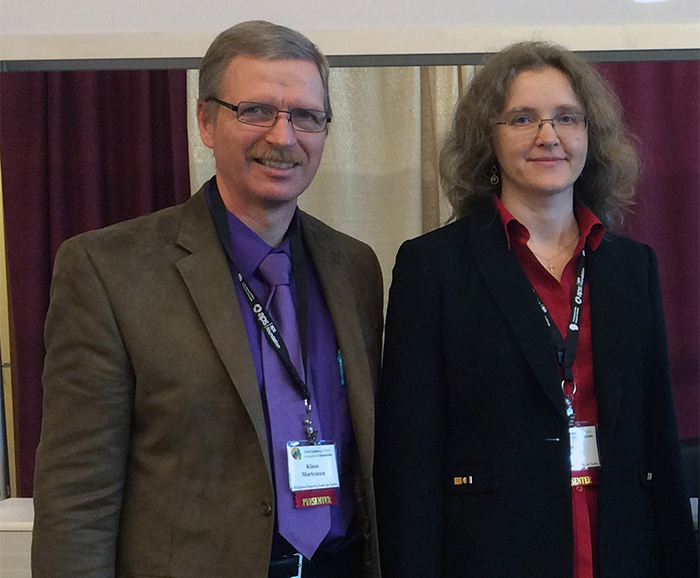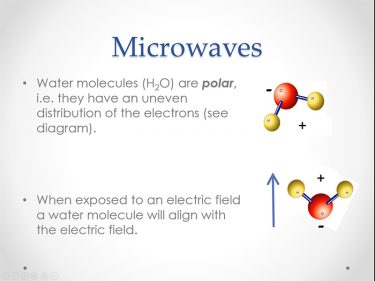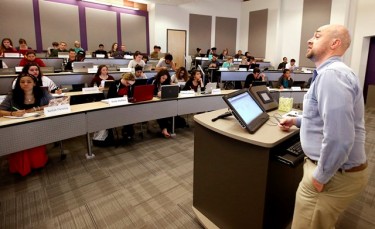
By Lana Sweeten-Shults
GCU News Bureau
“I’m going to be a nurse. I need anatomy and physiology. I definitely don’t need to get anywhere near physics.”
Whatever you do, don’t say that to College of Science, Engineering and Technology biological sciences professor Dr. Galyna Kufryk. Biology students do need to know some physics – and, even though they might feel a little trepidation about it, some math, too – to get a solid understanding of some of the concepts she teaches in her biology classes.
But the longtime educator discovered that students were coming to class never having taken physics before. When she polled her microbiology classes, she discovered that only about a third of the students indicated they took physics in high school. Those numbers match the national average. Only about 30 percent of high school graduates have taken a physics course, Kufryk said.
“To understand biology, even freshman courses, we need the basic knowledge of other subjects, such as physics and math. But it doesn’t mean that the students who come to our classes actually have that background and that high school prepared them because, unfortunately, a lot of subjects – physics, for instance – are still, in this day and age, optional,” said Kufryk, well known at GCU for her research of cyanobacteria and their potential in producing clean biofuels.
So Kufryk decided to do something to fill in those gaps and has taken an integrative approach to teaching by partnering with a couple of her fellow GCU professors.
It was in her microbiology course that she first saw a need for a physics supplement.
“For instance, we talk about different forms of radiation that can be used to control microbial growth. So if the students have no concept of what radiation is, how can I expect them to understand how that energy can be used to control microbial growth? And there is nothing in our curriculum that prepares them for it. So the only way to actually circumvent this problem is to integrate a little bit of physics into microbiology.”

In 2013 Kufryk decided to get help from GCU physics professor Dr. Klaus Mortensen in tackling this problem.
“She came to me and said, ‘I wish the students knew this physics,’” Mortensen said from his office in the CSET building. The problem is the students take this microbiology course before they take physics. If they take physics at all, depending on what program they’re in.
“There’s a topic where the students have to know … how do you kill germs. So it’s about how waves interact with biology, with microbes and biosystems and germs,” said Mortensen. “The students (lacking a physics background) don’t know that much about waves. In that class, they need to know about microwaves and ultraviolet waves, particularly because they can kill germs – you can use ultraviolet light to sterilize things. But for the students to understand that, it’s good that they understand how those waves work.”
So Mortensen put together a Microsoft PowerPoint learning module called “Electromagnetic Waves: An Introduction,” which comes not just with slides but a voice-over.
“They get to listen to me, and we have some links to very short YouTube videos that we found that supports it,” he added.
The learning module defines a wave – a disturbance that travels – and what it does, which is transfer energy and not material. It defines the types of waves, mechanical and electromagnetic, tells about electromagnetism and microwaves, details the types of photon energies (visible light, ultraviolet light, x-rays and gamma rays), and points out how UV, x-rays, and gamma rays, collectively called ionizing radiation, have enough energy to remove electrons from atoms.
Then he ties these energies to their biological effects, hoping to make the connection to how they can kill germs. Some molecules are sensitive to visible light, for example, and most molecules can be damaged by photons with frequencies higher than those for visible light.
The module takes about 30 minutes to complete. It’s followed by a 25-question self-assessment the students can take online to see if they understood the material.
“We can see how well they do on the test, but they don’t get graded on it, and they can take the test as many times as they want until they get all the questions right,” Mortensen said.
Kufryk presented these integrative teaching efforts at a recent Association of American Colleges and Universities conference.
“AACU has representation from various schools in the nation,” Kufryk said. “It was our first AACU conference application, and we did not know what to expect. Among hundreds of projects, the organizers chose us to give a talk on how physics can be integrated with biology.”
Also, she and Mortensen presented a workshop in 2016 at the 21st Century STEM Conference.
Mortensen said, “There were people that were looking to do, even high school teachers looking to say, oh, when students come into my class and they don’t have or don’t remember things from before, this would be a way for them to catch up.”

In 2016, Kufryk also started working with mathematics professor Dr. Filippo Posta, whose doctorate is in applied mathematics and worked in biomathematics at the University of California-Los Angeles. He created an 11-page learning module on exponential logarithms for her microbiology classes.
“In microbiology we discuss bacterial growth,” Kufryk said. “If you look at number of cells over time, it’s an exponential curve” and the students have to be prepared to deal with exponential functions.
“A lot of them are not missing the math, but they need to be refreshed in exponential logarithms, basically,” Posta said. “It’s all stuff they’ve seen before. The problem is that maybe it was a long time ago or maybe they just don’t like math that much or had bad teachers. There could be all sorts of reasons.”
Posta and Kufryk, meanwhile, have started writing a paper on the integration of math and biology.
“Hopefully we’ll submit it for publication by the end of the semester and present it as well at a conference once we get to that,” Posta said.
Kufryk said she and Mortensen have collected three years of data with the physics learning module.
“We have the data that proves that, actually, it (the physics learning module) helps if you look at their benchmark scores. … They do way better compared to those students who don’t use it,” Kufryk said.
And she and Posta have compiled two years of data with the math learning module.
“The student who did the module had better grades,” Posta said.
Student Marcie Johnson said of integrating the physics module into her Microbiology class, “The most helpful thing was more understanding of how physics relates to the medical field, in other words, x-rays and microbial control. Really enjoyed that! I used the PowerPoint.”
Kufryk’s student, Brittany Gerry, said, “It was helpful to get a review of how to do exponential and logarithmic operations, since microbiology uses them a lot.”
It was a sentiment echoed by GCU nursing student Linda Corona, “It was helpful because throughout my college experience, I needed to know how to do it and use it in other classes.”
Kufryk is obviously passionate about promoting a greater connection between academic disciplines and collaboration between different disciplines and colleges.
She said of the academic efforts in her biology classes, “I felt that I needed some kind of solution that’s manageable. We can’t make students take math and physics if it’s not in their program.”
Some students in her microbiology course, for example, are going into nursing, and physics isn’t part of their curriculum.
“But if I don’t give them that little exposure to physics, they are not going to really understand what goes on when they use radiation. How good, then, is my microbiology course going to be?” The same with math. Math is taught in high schools but to a different level.
“I want to make sure that I offer my students the tool that would bring them up to the level necessary to fully understand the material. Ultimately, our goal is to make them more successful in this course and beyond.”
GCU senior writer Lana Sweeten-Shults can be reached at 602-639-7901 or by email at [email protected]. Follow her on Twitter @LanaSweetenShul.




